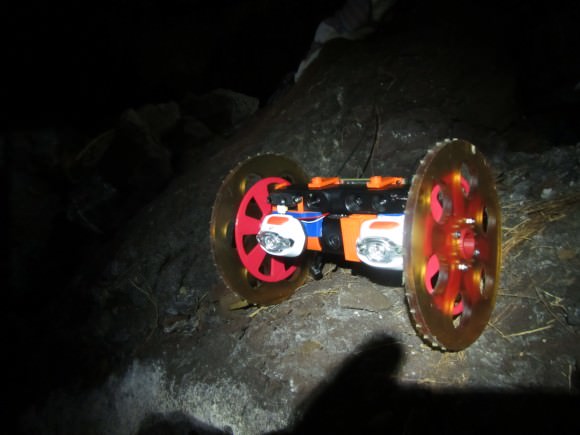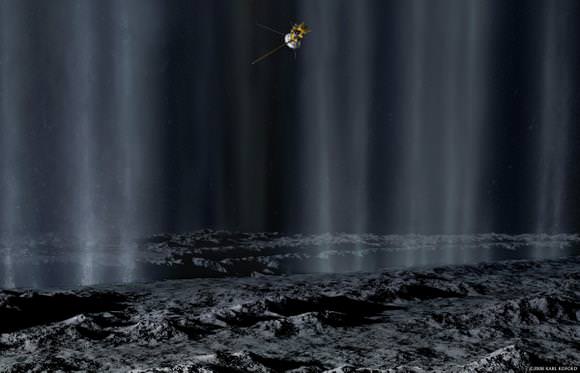We’ve seen volcanoes or geysers erupting on the moons of Io and Enceladus. Volcanic remnants remain on Mars and the Moon. But it’s tough for rovers to get inside these challenging environments.
So NASA’s Jet Propulsion Laboratory is trying out a new robot here on Earth to one day, they hope, get inside volcanoes elsewhere in the Solar System.
The series is called VolcanoBot. The first prototype was tested last year inside the the active Kilauea volcano in Hawaii, and a second is set for further work later this year.
As you can see in the picture below, VolcanoBot has a set of small wheels and a host of electronics inside. The goal is to create 3-D maps of the environments in which they roam. And early results are showing some promise, NASA noted in a press release: VolcanoBot discovered the fissure it was exploring did not completely close up, which is something they did not expect.

“We don’t know exactly how volcanoes erupt. We have models but they are all very, very simplified. This project aims to help make those models more realistic,” stated Carolyn Parcheta, a NASA postdoctoral fellow at the Jet Propulsion Laboratory in California who is leading the research.
“In order to eventually understand how to predict eruptions and conduct hazard assessments, we need to understand how the magma is coming out of the ground,” she added. “This is the first time we have been able to measure it directly, from the inside, to centimeter-scale accuracy.”
The research will continue this year with VolcanoBot 2, which has less mass, less size and has an advanced “vison center” that can turn about.

Parcheta’s research recently attracted the attention of visitors to National Geographic’s website, who voted her #2 in a list of “great explorers” on the Expedition Granted campaign.
Remember that this is early-stage research, with no missions outside of Earth yet assigned. But this is a small step — or roll, in this case — to better understanding how volcanoes work generally, whether on our own planet or other locations.
Source: Jet Propulsion Laboratory

